- Home
- Ron Chernow
Titan Page 2
Titan Read online
Page 2
Despite his initial hesitation, Rockefeller couldn’t resist the invitation to relive his turbulent early years in the petroleum industry, and he warmed to the giant task of remembrance. During hundreds of hours of interviews, spanning a three-year period, he revisited the past and spoke his mind freely. At times, he evoked his life in the dulcet tones of a preacher addressing a brotherhood of kindred souls. At other moments, he was dryly sardonic or brutally funny about his critics—though all the while, as a good Christian, he tried to suppress vengeful feelings toward them.
Before Inglis’s wondering eyes, the old man was rejuvenated by the flood tide of memory, and his voice deepened from the high, breathy pitch of age to the mellow baritone of early adulthood. His step grew springy and lithe as he paced the floor, recounting the glorious struggles of his career. Far from dodging controversy, Rockefeller suggested a novel structure for this retrospective talk: Inglis would read passages from Rockefeller’s two chief antagonists, Henry Lloyd and Ida Tarbell (whose influential broadside had been published in the early 1900s), and Rockefeller would refute them, paragraph by paragraph. Having dismissed their indictments as beneath his dignity, he hadn’t deigned to read them when they first appeared. Now, in a measure of his feisty selfconfidence, he decided to tackle the toughest charges point-blank. “I was averse for eight months to say anything in response to these foolish writers,” he noted, “but now that I’ve gotten into it I find it interesting.”3 And once John D. Rockefeller, Sr., set his mind to something, he brought awesome powers of concentration to bear.
As Rockefeller undertook this extended defense, he clearly believed that he had been vindicated in the time since these journalists had blackened his reputation in the early 1900s and made him America’s most hated businessman. “All of those in the business today are doing business along the modern lines, following the plans which we were the first to propose,” he said with pride.4 Public bitterness toward him had waned, he believed, and opposition to his petroleum empire was “practically nil and has been for many years, and it has ceased to be popular to raid the Standard Oil Company.”5 Indeed, the American public during World War I appreciated the industrial strength conferred by the Standard Oil companies, and Rockefeller imagined, with some justice, that his compatriots now viewed him as a public benefactor, not as a corporate buccaneer. The huge philanthropies he had endowed in recent years had also mitigated public animosity toward him.
As always with Rockefeller, the pregnant silences in the interview spoke as eloquently as the words. Coached by his publicist, Ivy Lee, Rockefeller eschewed such loaded terms as trust, monopoly, oligopoly, or cartel when referring to Standard Oil and preferred to speak of “cooperation.” He expressed scorn for the textbook world of free markets evoked by Adam Smith: “What a blessing it was that the idea of cooperation, with railroads, with telegraph lines, with steel companies, with oil companies, came in and prevailed, to take the place of this chaotic condition in which the virtuous academic Know-Nothings about business were doing what they construed to be God’s service in eating each other up.”6 During the three-year interview, Rockefeller never once alluded to his most stinging setback: the federal government’s 1911 dismemberment of Standard Oil into dozens of constituent companies. Annulling the Supreme Court verdict by a trick of memory, Rockefeller talked of Standard Oil as if the old monolith still stood unscathed.
Of all the poses he assumed, perhaps the hardest to maintain was that he bore no grudges against his detractors. He peppered his talk with references to his forgiving nature. “The representatives of the Standard Oil Company cherish most kindly and brotherly feelings even toward those who abused them most, and are ready to lay it to their weakness and ignorance and whatever else was controlling them.”7 Furthermore: “And to those who have uttered against them harsh words, we cherish no resentment. ‘To err is human, to forgive divine.’ ”8 And, even more conciliatory: “And I rejoice also that we are charitable and sweet-spirited to these jealous, small men who made it the business of their lives to try to pull us down because their vision did not extend beyond the ends of their noses.”
Over time, however, the sacerdotal tone began to falter. Rockefeller couldn’t conceive of a genuinely principled objection to his career and increasingly resorted to ad hominem attacks, deriding his critics as croakers, howlers, grumblers, complainers, blackmailers, pirates, spoiled children, whiners, adventurers, wolves, and freebooters. Clearly, the allegations rankled, especially those of Ida Minerva Tarbell, whose cool, clear-eyed investigative prose had turned his name into a byword for corporate greed. With golf cronies, Rockefeller had poked fun at her, calling her “Miss Tarbarrel,” but this was a transparent attempt to draw the sting from her words.
During the marathon interview, Inglis saw Rockefeller’s iron poise and self-mastery crumble only twice and both times, significantly, in responding to Tarbell. The first time came when he read aloud her charge that in 1872 the thirty-two-year-old Rockefeller had taken over the Cleveland refineries by threatening to crush rivals who refused to join his cartel. Now, 1872 had been the starting point of his relentless march toward supremacy in oil. If that year was tainted, then everything was. Inglis recorded a graphic account of Rockefeller’s reaction to Tarbell’s allegation:
“That is absolutely false!” exclaimed Mr. Rockefeller so loudly that I looked up from the notes. As he spoke he jumped up from the big chair in which he was reclining and walked over to my table. His face was flushed and his eyes were burning. It was the first time I had ever seen him show any but pleasant feeling, and there could be no doubt that he was aflame with anger and resentment. His voice rang out loud and clear. He did not beat the desk with his fist, but stood there with his hands clenched, controlling himself with evident effort. He could not immediately regain his balance. “This is absolutely false!” he cried, “and no man was told that by me or by any of our representatives. You may put that down once and for all. That statement is an absolute lie!”9
After this outburst, Rockefeller’s emotions subsided, but the insinuation stung. Later, he and Inglis roamed over the hills and golf fairways of his vast estate; “How ridiculous all that talk is!” he exclaimed. “It’s twaddle, poisonous twaddle, put out for a purpose. As a matter of fact, we were all in a sinking ship, if existing cut-throat competition continued, and we were trying to build a lifeboat to carry us all to the shore. You don’t have to threaten men to get them to leave a sinking ship in a lifeboat.”10 The purchase of his competitors’ firms had not been the benevolent act that Rockefeller suggested, but he had a powerfully selective memory.
Rockefeller reserved his most bitter epithets for another passage, where Tarbell dealt with the touchiest matter in his personal life: the character of his colorful, raffish father, William Avery Rockefeller. In July 1905, she had capped off her serial history of Standard Oil with a two-part “Character Study” of Rockefeller filled with venomous portrayals of his father, an itinerant peddler of patent medicines who had led a shadowy, vagabond life. William Avery Rockefeller had been the sort of fast-talking huckster who thrived in frontier communities of early-nineteenth-century America, and Tarbell amply reported his misdemeanors. At one point in her blistering portrait, she said, “Indeed he had all the vices save one—he never drank.” 11
This thrust against his dead father probed some buried pain, some still-festering wound inside Rockefeller, and he suddenly erupted with explosive fury. “What a wretched utterance from one calling herself a historian,” he jeered, speculating, quite incorrectly, that Tarbell had been embittered by the failure of her series to dent the Standard Oil empire. “So she turned to this miserable fabrication, with all the sneers, all the malice, all the sly hintings and perversions of which she is master, and with more bitterness than ever attacked my father.”12 Momentarily, Rockefeller couldn’t regain his self-control: His famous granite composure had utterly broken down. And for one of the few times in his life, he let forth a torrent of intemperate abuse. Splutte
ring with rage, he railed against “the poison tongue of this poison woman who seeks to poison the public with every endeavor . . . to cast suspicion on everything good, bad, or indifferent appertaining to a name which has thus far not been ruined by her shafts.” Aware that he had, uncharacteristically, let down his guard, Rockefeller soon checked himself and restored the old pose of philosophic calm, reassuring Inglis in soothing tones, “After all, though, I am grateful that I do not cherish bitterness even against this ‘historian,’ but pity.”13 The titan had regained his dignity, and he made sure that his tightly fitted mask never slipped again in front of his authorized biographer.
The earliest known photographs of William Avery and Eliza Davison Rockefeller. (Courtesy of the Rockefeller Archive Center)
CHAPTER 1
The Flimflam Man
In the early 1900s, as Rockefeller vied with Andrew Carnegie for the title of the world’s richest man, a spirited rivalry arose between France and Germany, with each claiming to be Rockefeller’s ancestral land. Assorted genealogists stood ready, for a sizable fee, to manufacture a splendid royal lineage for the oilman. “I have no desire to trace myself back to the nobility,” he said honestly. “I am satisfied with my good old American stock.” 1 The most ambitious search for Rockefeller’s roots traced them back to a ninth-century French family, the Roquefeuilles, who supposedly inhabited a Languedoc château—a charming story that unfortunately has been refuted by recent findings. In contrast, the Rockefellers’ German lineage has been clearly established in the Rhine valley dating back to at least the early 1600s.
Around 1723, Johann Peter Rockefeller, a miller, gathered up his wife and five children, set sail for Philadelphia, and settled on a farm in Somerville and then Amwell, New Jersey, where he evidently flourished and acquired large landholdings. More than a decade later, his cousin Diell Rockefeller left southwest Germany and moved to Germantown, New York. Diell’s granddaughter Christina married her distant relative William, one of Johann’s grandsons. (Never particularly sentimental about his European forebears, John D. Rockefeller did erect a monument to the patriarch, Johann Peter, at his burial site in Flemington, New Jersey.) The marriage of William and Christina produced a son named Godfrey Rockefeller, who was the grandfather of the oil titan and a most unlikely progenitor of the clan. In 1806, Godfrey married Lucy Avery in Great Barrington, Massachusetts, despite the grave qualms of her family.
Establishing a pattern that would be replicated by Rockefeller’s own mother, Lucy had, in her family’s disparaging view, married down. Her ancestors had emigrated from Devon, England, to Salem, Massachusetts, around 1630, forming part of the Puritan tide. As they became settled and gentrified, the versatile Averys spawned ministers, soldiers, civic leaders, explorers, and traders, not to mention a bold clutch of Indian fighters. During the American Revolution, eleven Averys perished gloriously in the battle of Groton. While the Rockefellers’ “noble” roots required some poetic license and liberal embellishment, Lucy could justly claim descent from Edmund Ironside, the English king, who was crowned in 1016.
Godfrey Rockefeller was sadly mismatched with his enterprising wife. He had a stunted, impoverished look and a hangdog air of perpetual defeat. Taller than her husband, a fiery Baptist of commanding presence, Lucy was rawboned and confident, with a vigorous step and alert blue eyes. A former schoolteacher, she was better educated than Godfrey. Even John D., never given to invidious comments about relatives, tactfully conceded, “My grandmother was a brave woman. Her husband was not so brave as she.” 2 If Godfrey contributed the Rockefeller coloring—bluish gray eyes, light brown hair—Lucy introduced the rangy frame later notable among the men. Enjoying robust energy and buoyant health, Lucy had ten children, with the third, William Avery Rockefeller, born in Granger, New York, in 1810. While it is easy enough to date the birth of Rockefeller’s father, teams of frazzled reporters would one day exhaust themselves trying to establish the date of his death.
As a farmer and businessman, Godfrey enjoyed checkered success, and his aborted business ventures exposed his family to an insecure, peripatetic life. They were forced to move to Granger and Ancram, New York, then to Great Barrington, before doubling back to Livingston, New York. John D. Rockefeller’s upbringing would be fertile with cautionary figures of weak men gone astray. Godfrey must have been invoked frequently as a model to be avoided. By all accounts, Grandpa was a jovial, good-natured man but feckless and addicted to drink, producing in Lucy an everlasting hatred of liquor that she must have drummed into her grandson. Grandpa Godfrey was the first to establish in John D.’s mind an enduring equation between bonhomie and lax character, making the latter prefer the society of sober, tight-lipped men in full command of their emotions.
The Rockefeller records offer various scenarios of why Godfrey and Lucy packed their belongings into an overloaded Conestoga wagon and headed west between 1832 and 1834. By one account, the Rockefellers, along with several neighbors, were dispossessed of their land in a heated title dispute with some English investors. Another account has an unscrupulous businessman gulling Godfrey into swapping his farm for allegedly richer turf in Tioga County. (If this claim was in fact made, it proved a cruel hoax.) Some relatives later said that Michigan was Godfrey’s real destination but that Lucy vetoed such a drastic relocation, preferring the New England culture of upstate New York to the wilds of Michigan.
Whatever the reason, the Rockefellers reenacted the primordial American rite of setting out in search of fresh opportunity. In the 1830s, many settlers from Massachusetts and Connecticut were swarming excitedly into wilderness areas of western New York, a migration that Alexis de Tocqueville described as “a game of chance” pursued for “the emotions it excites, as much as for the gain it procures.”3 The construction of the Erie Canal in the 1820s had lured many settlers to the area. Godfrey and Lucy heaped up their worldly possessions in a canvas-topped prairie schooner, drawn by oxen, and headed toward the sparsely settled territory. For two weeks, they traveled along the dusty Albany-Catskill turnpike, creeping through forests as darkly forbidding as the setting of a Grimms’ fairy tale. With much baggage and little passenger space, the Rockefellers had to walk for much of the journey, with Lucy and the children (except William, who did not accompany them) taking turns sitting in the wagon whenever they grew weary. As they finally reached their destination, Richford, New York, the last three and a half miles were especially arduous, and the oxen negotiated the stony, rutted path with difficulty. At the end, they had to lash their exhausted team up a nearly vertical hillside to possess their virgin sixty acres. As family legend has it, Godfrey got out, tramped to the property’s peak, inspected the vista, and said mournfully, “This is as close as we shall ever get to Michigan.” So, in a memorial to dashed hopes, the spot would forever bear the melancholy name of Michigan Hill.
Even today scarcely more than a crossroads, Richford was then a stagecoach stop in the wooded country southeast of Ithaca and northwest of Binghamton. The area’s original inhabitants, the Iroquois, had been chased out after the American Revolution and replaced by revolutionary army veterans. Still an uncouth frontier when the Rockefellers arrived, this backwater had recently attained township status, its village square dating from 1821. Civilization had taken only a tenuous hold. The dense forests on all sides teemed with game— bear, deer, panther, wild turkey, and cottontail rabbit—and people carried flaring torches at night to frighten away the roaming packs of wolves.
By the time that John D. Rockefeller was born in 1839, Richford was acquiring the amenities of a small town. It had some nascent industries—sawmills, gristmills, and a whiskey distillery—plus a schoolhouse and a church. Most inhabitants scratched out a living from hardscrabble farming, yet these newcomers were hopeful and enterprising. Notwithstanding their frontier trappings, they had carried with them the frugal culture of Puritan New England, which John D. Rockefeller would come to exemplify.
The Rockfellers’ steep property provided a sweeping panoram
a of a fertile valley. The vernal slopes were spattered with wildflowers, and chestnuts and berries abounded in the fall. Amid this sylvan beauty, the Rockfellers had to struggle with a spartan life. They occupied a small, plain house, twenty-two feet deep and sixteen feet across, fashioned with hand-hewn beams and timbers. The thin soil was so rocky that it required heroic exertions just to hack a clearing through the underbrush and across thickly forested slopes of pine, hemlock, oak, and maple.
As best we can gauge from a handful of surviving anecdotes, Lucy ably managed both family and farm and never shirked heavy toil. Assisted by a pair of steers, she laid an entire stone wall by herself and had the quick-witted cunning and cool resourcefulness that would reappear in her grandson. John D. delighted in telling how she pounced upon a grain thief in their dark barn one night. Unable to discern the intruder’s face, she had the mental composure to snip a piece of fabric from his coat sleeve. When she later spotted the man’s frayed coat, she confronted the flabbergasted thief with the missing swatch; having silently made her point, she never pressed charges. One last item about Lucy deserves mention: She had great interest in herbal medicines and home-brewed remedies prepared from a “physic bush” in the backyard. Many years later, her curious grandson sent specimens of this bush to a laboratory to see whether they possessed genuine medicinal value. Perhaps it was from Lucy that he inherited the fascination with medicine that ran through his life, right up to his creation of the world’s preeminent medical-research institute.
By the time he was in his twenties, William Avery Rockefeller was already a sworn foe of conventional morality who had opted for a vagabond existence. Even as an adolescent, he disappeared on long trips in midwinter, providing no clues as to his whereabouts. Throughout his life, he expended considerable energy on tricks and schemes to avoid plain hard work. But he possessed such brash charm and rugged good looks—he was nearly six feet tall, with a broad chest, high forehead, and thick auburn beard covering a pugnacious jaw— that people were instantly beguiled by him. This appealing façade, at least for a while, lulled skeptics and disarmed critics. It wasn’t surprising that this nomad did not accompany his parents on their westward trek to Richford but instead drifted into the area around 1835 in his own inimitable fashion. When he first appeared in a neighboring hamlet, he quickly impressed the locals with his unorthodox style. Posing as a deaf-mute peddler selling cheap novelties, he kept a small slate with the words “I am deaf and dumb” chalked across it tied by a string to his buttonhole. On this slate, he conversed with the locals and later boasted how he exploited this ruse to flush out all the town secrets. To win the confidence of strangers and soften them up for the hard sell, he toted along a kaleidoscope, inviting people to peer into it.4 During his long career as a confidence man, Big Bill always risked reprisals from people who might suddenly unmask his deceptions, and he narrowly escaped detection at the home of a Deacon Wells. The deacon and his daughter, a Mrs. Smith, pitied the poor peddler who knocked on their door one Saturday and sheltered him in their home that night. The next morning, when they invited him to church, Big Bill had to resort to some fancy footwork, for he always shied away from crowds where somebody might recognize him and expose his imposture. “Billy told [the deacon] in writing that he liked to go to church, but that his infirmity caused him to be stared at, so that he was abashed and would not go,” recalled a towns-man. “He really feared that he might be exposed by someone.”5 Seven months later, after the deacon and Big Bill had both moved to Richford, Mrs. Smith spotted the erstwhile deaf-mute at a social gathering and marveled at his miraculous recovery of speech. “I see that you can talk better than when I saw you last,” she said. Big Bill smiled, unfazed, his bravado intact. “Yes, I’m somewhat improved.”6 When he arrived in Richford, the local citizens immediately got a taste of his fakery, for he wordlessly flashed a slate with the scribbled query, “Where is the house of Godfrey Rockefeller?”7

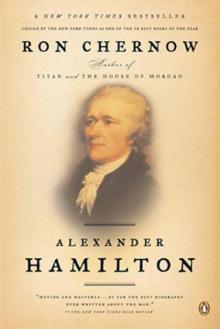 Alexander Hamilton
Alexander Hamilton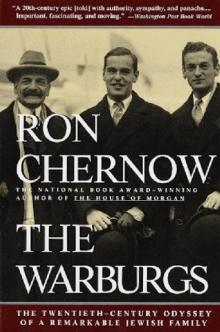 The Warburgs
The Warburgs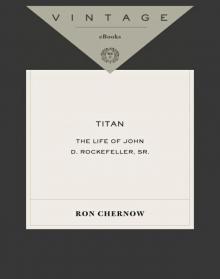 Titan
Titan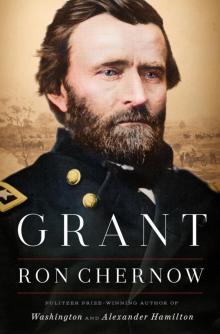 Grant
Grant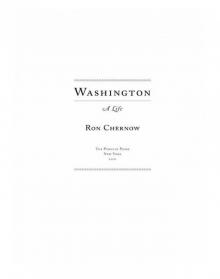 Washington
Washington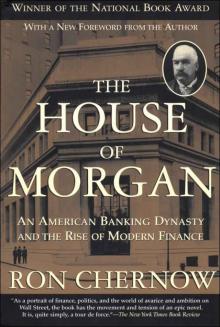 The House of Morgan
The House of Morgan The House of Morgan: An American Banking Dynasty and the Rise of Modern Finance
The House of Morgan: An American Banking Dynasty and the Rise of Modern Finance